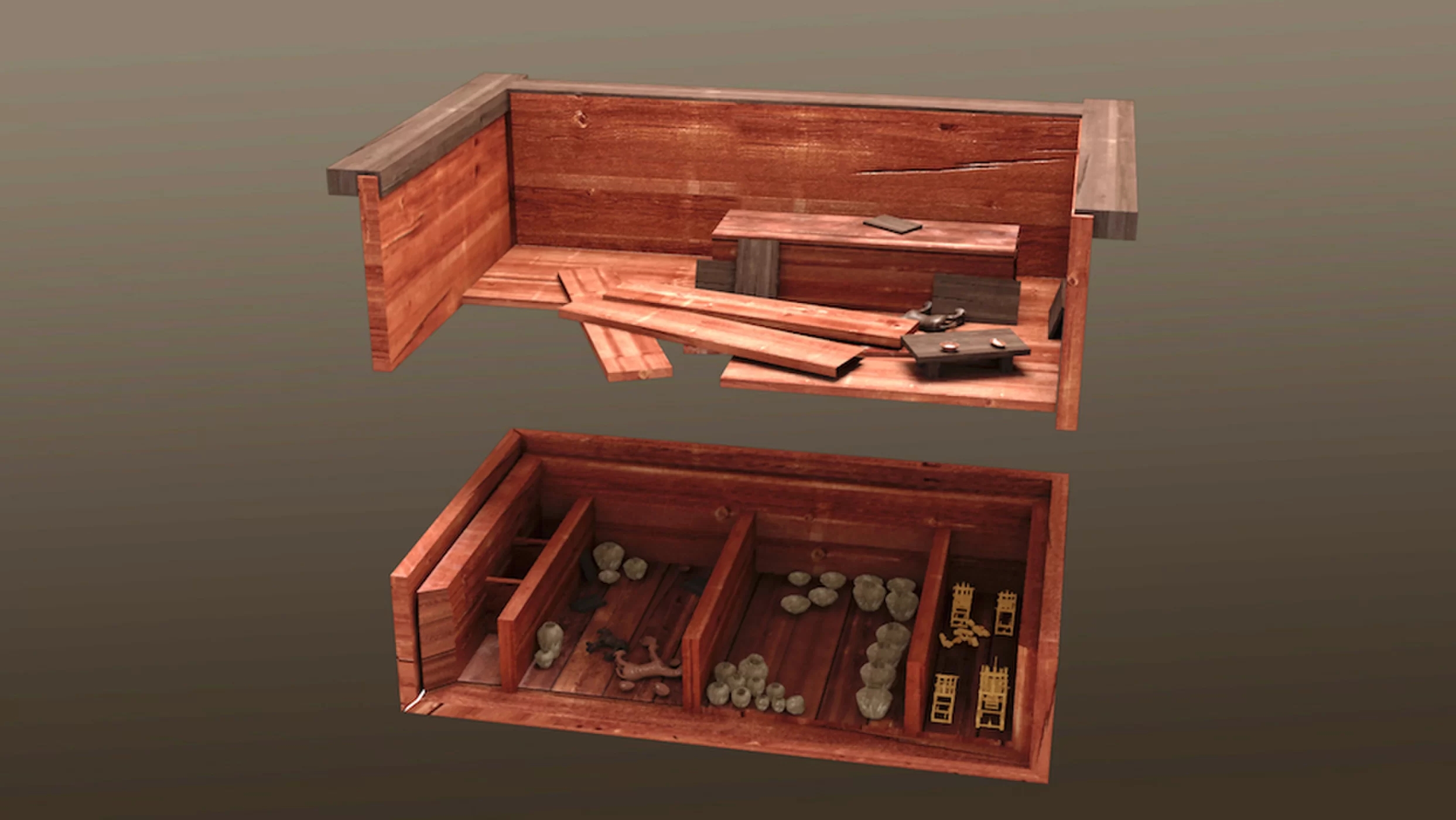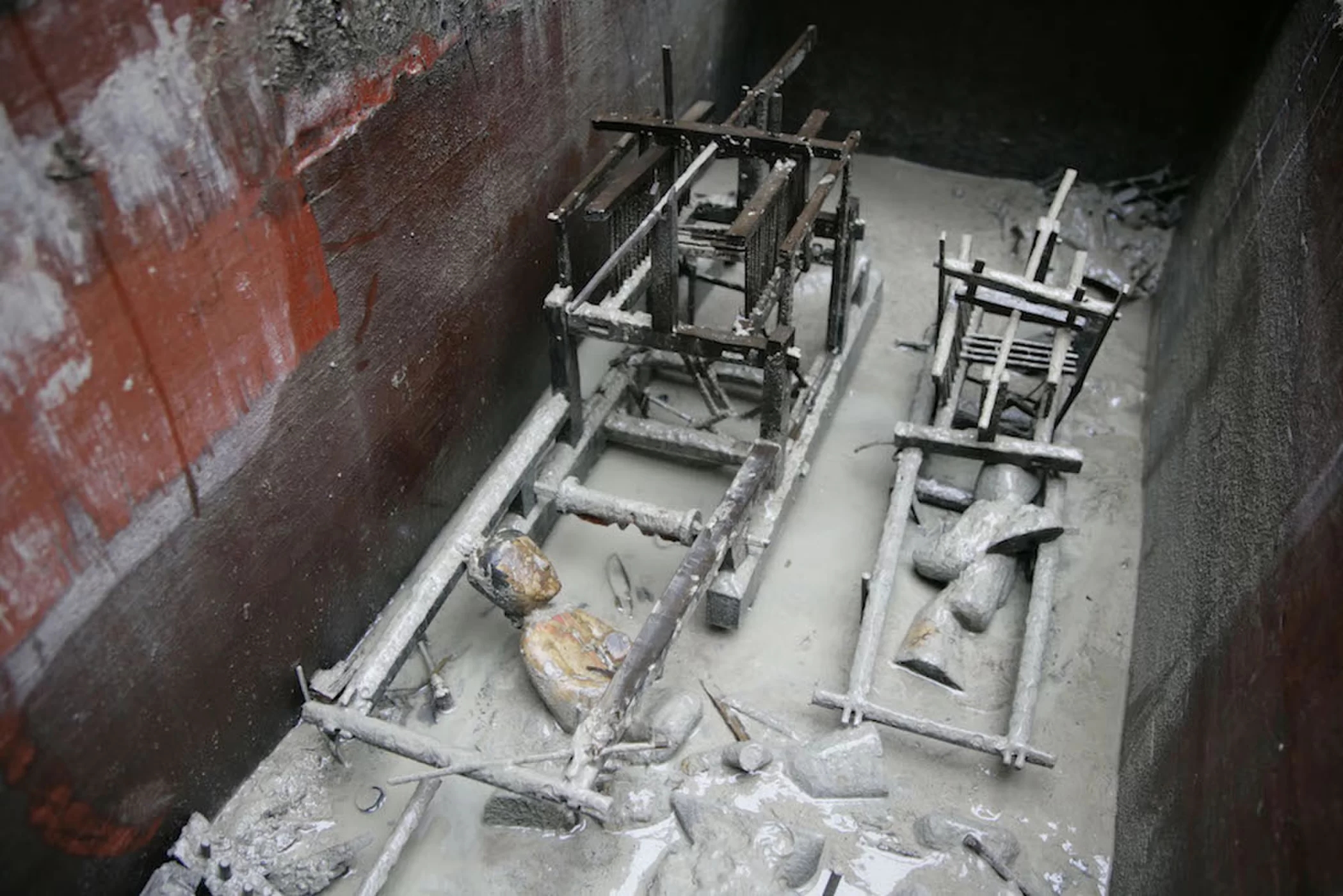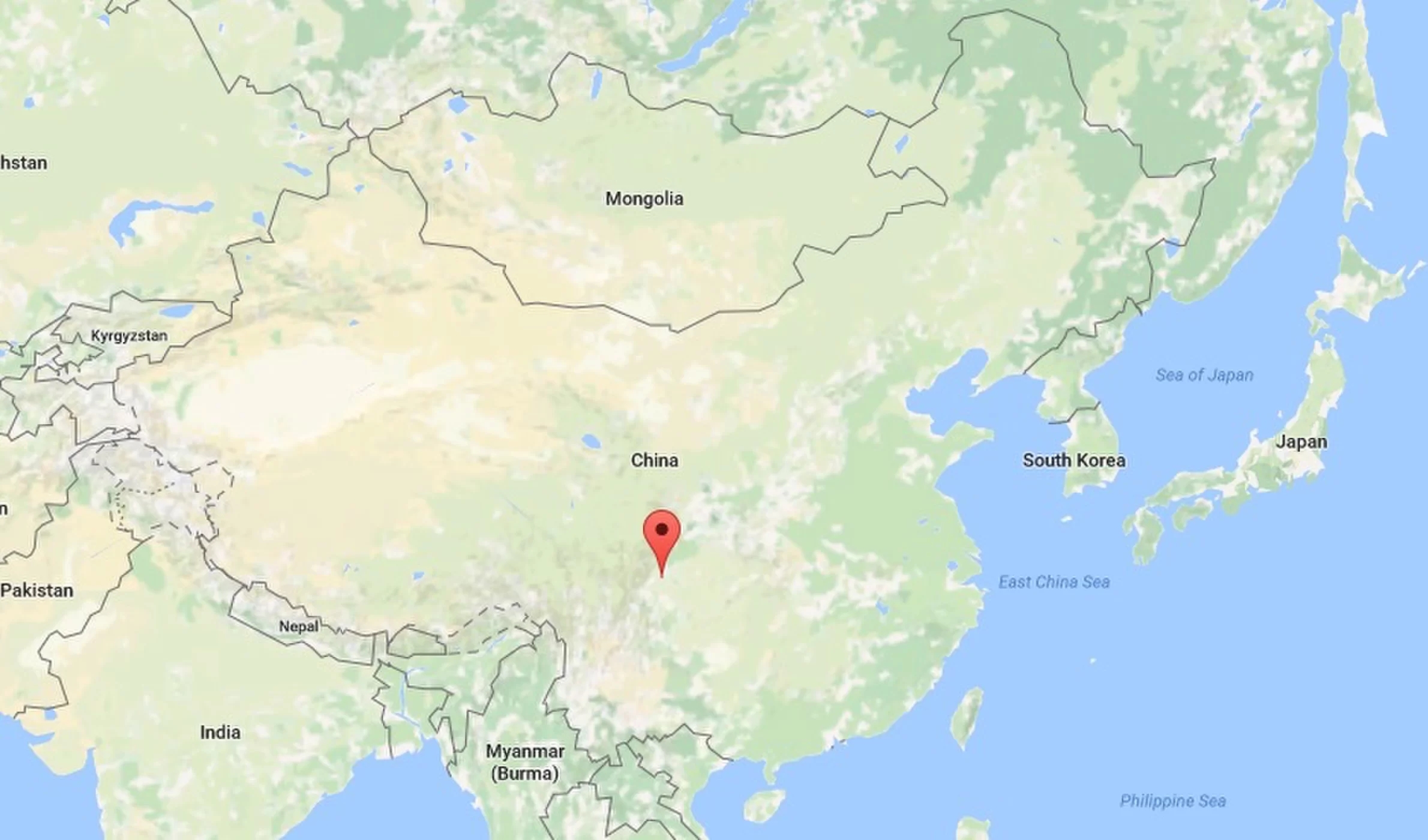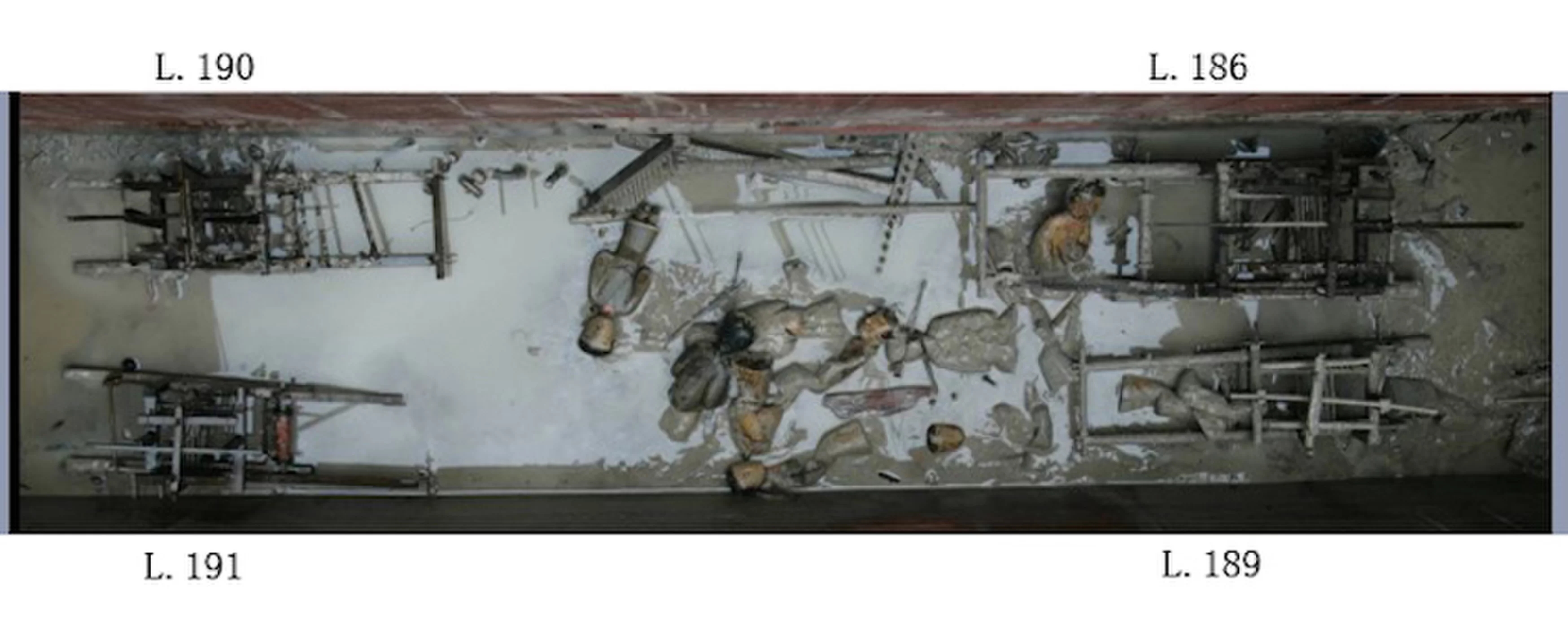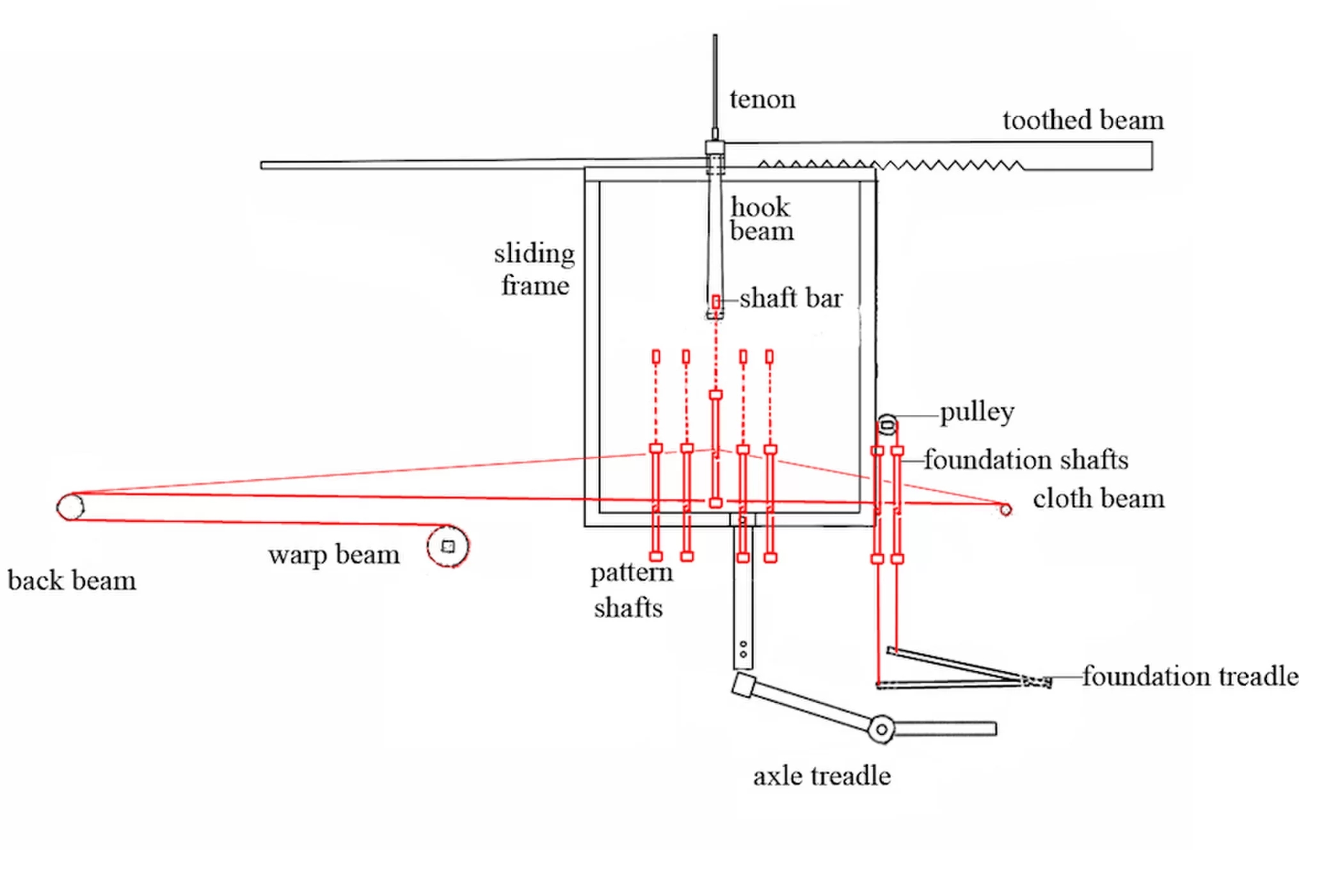DepthReading
Wooden Figurines 'Weave' at Tiny Looms Placed in Ancient Grave
Tiny wooden figurines have stood upright "weaving" at appropriately sized looms for more than 2,100 years in a Chinese tomb containing the remains of a middle-age woman, a new study finds.
The discovery of the miniature scene astonished archaeologists, who were surveying an area slated for subway construction in Chengdu, a city in China's southwestern Sichuan province, in 2013. The looms may be small — the largest is about the size of a child's toy piano — but they're the earliest evidence on record of looms that could be used to weave patterns, the researchers said.
"We are very sure that the loom models from Chengdu are the earliest pattern looms around the world," said the study's lead researcher, Feng Zhao, the director of the China National Silk Museum in Hangzhou, China, and a professor at Donghua University in Shanghai. [See Images of the Model-Size Pattern Looms]
It's unclear when and where the first looms were developed, but archaeologists have found ancient looms parts at a variety of sites. For instance, in China's eastern Zhejiang province archaeologists found an approximately 8,000-year-old loom from the Kuahuqiao archaeological site, and a roughly 7,000-year-old loom found at the Hemudu site, Zhao said. Other looms include pieces of Egyptian creations from about 4,000 and 3,400 years ago, respectively, and Greek looms illustrated on vases dating to about 2,400 years ago, the researchers said.
However, unlike their predecessors, pattern looms are used to weave a "complex kind of textile," Zhao told Live Science in an email. Weavers used this type of loom to create patterns by stringing up the weft (the crosswise yarn on the loom) and weaving the warp (the longitudinal yarn that is passed over and under the weft) through it, he said.
Pattern looms likely inspired people to make the draw loom — a device that can weave even more complex patterns, the researchers said.
"[The draw loom] was then introduced to the West — Persia, India and Europe — indicating that the Chinese silk pattern loom made a significant contribution to the subsequent development of world textile culture and weaving technology," Zhao said.
Tiny weavers
The tomb chamber itself is spacious — about 24 feet long, 16 feet wide and 9 feet high (7 by 2.5 by 3 meters) — and contains one large room with four smaller compartments beneath it, the researchers said. The large room held the remains of an approximately 50-year-old woman whose name was Wan Dinu, according to a jade seal outside the coffin. (The seal was broken, suggesting that grave robbers had pilfered the grave's contents shortly after the burial, the researchers said.)
One of the small compartments under the grave held the four model looms, each about one-sixth the size of a regular loom, the researchers said. Next to the looms were devices for warping, rewinding and weft winding, along with 15 painted wooden figurines (four male weavers and nine female weaving assistants), each with a name written on them, suggesting that they represented real-life weavers, the researchers wrote in the study.
The 10-inch-tall (25 centimeters) weavers were carved "in the act of warping, weft winding and rewinding," Zhao said.
By studying the style of the tomb and a Western Han Dynasty bronze coin found within the tomb, the researchers dated the chamber to the reigns of Emperors Jingdi (157 to 141 B.C.) and Wudi (141 to 88 B.C.), the researchers said.
The model looms are "the missing technological link responsible for the renowned Han Dynasty Shu jin silks, which are frequently found along the Silk Road, and were traded across Eurasia," the researchers wrote in the study, which was published in the April issue of the journal Antiquity.
Editor's Note: This story was updated to say that it is unclear when and where the first looms were developed.
Archaeologists unearthed four tiny looms attended by 15 carved wooden figurines in the grave of a Chinese woman dating to the second century B.C. The looms — the largest about the size of a child's toy piano — are the first evidence in the world of looms that can weave patterns.
"This discovery points to an ancient Chinese origin for a technology that revolutionized silk production throughout the rest of Asia and Europe," said the study's lead researcher, Feng Zhao, the director of the China National Silk Museum in Hangzhou, China, and a professor at Donghua University in Shanghai.
Archaeologists found the tomb while surveying an area tagged for subway construction in Chengdu, a city in China's southwestern Sichuan province, in 2013.
The tomb itself is spacious — about 24 feet long, 16 feet wide and 9 feet high (7 by 2.5 by 3 meters). It contains one large room with four smaller compartments beneath it. The large room on top held the remains of a woman who was about 50 years old when she died. Her name was Wan Dinu, according to a jade seal outside the coffin.
This drawing is a reconstruction of the tomb chamber showing the different levels.
This photo shows the northernmost compartment under the large room. It holds the four looms and 15 figurines (four male weavers and nine female weaving assistants).
The largest loom of the four looms (left) is 33 inches long, 10 inches wide and 20 inches high (85 by 26 by 50 centimeters). The wooden figures are about 10 inches tall (25 centimeters) and were carved "in the act of warping, weft winding and rewinding," Zhao said.
This schematic diagram shows a reconstruction of the largest of the four looms.
Another drawing of the largest of the four looms. Except for cinnabar-colored red silk thread and a brown thread, there weren't any textiles found on the tiny looms. However, this re-creation shows what the loom would have looked like with fabric.
This drawing shows how the largest loom's beams, shafts and treadles would have moved. The red lines show the moving warp and shaft components of the loom, the researchers said.
Pattern looms, like the ones discovered in the tomb, can make complex patterns. Here is silk with geometric patterns (top) from the archaeological site of Mawangdui in China's Hunan province. Below is a drawing of the corresponding pattern.
Category: English
DepthReading
Key words:


